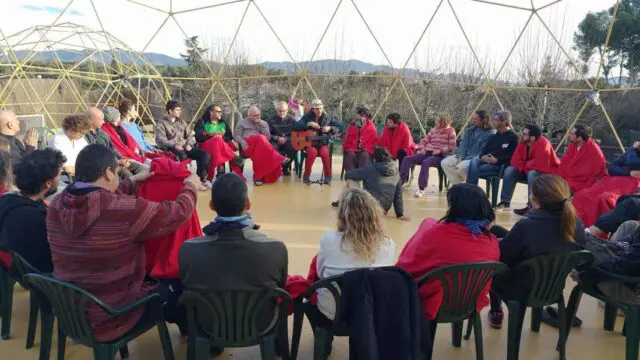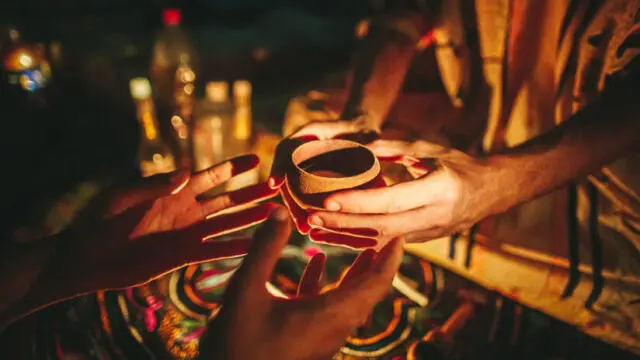If the “ayahuasqueros” of the world united, they could create a human chain stretching from Madrid to Moscow and back. This interesting tidbit is based on recent research that reveals that approximately four million people have taken ayahuasca at some time in their lives in America, Europe, Australia, and New Zealand. This estimate can be expanded to include people who engage in ayahuasca rituals in Asia and Africa, although the practice is less widespread in these regions. Factoring in that data, the human chain would cross Eurasia from Berlin to Beijing!
In 2019, the year before COVID, more than 800,000 people took ayahuasca at least once. Since a large proportion of them took it several times (or dozens), our estimates suggest that five and a half million people had ayahuasca that year.
Brazil and the United States Lead the Way
In terms of absolute numbers, Brazil and the United States, the two most populous countries among those studied, are the global leaders in ayahuasca consumption.
Based on data from the National Survey on Drug Use, we estimate that approximately one and a half million people in the USA have tried ayahuasca (0.5% of the population). In Brazil, the Third National Survey on Drug Use found that 0.37% of the population (or almost 600,000 people) have taken ayahuasca.
However, the frequency of consumption varies greatly between the two countries. In Brazil, the home of ayahuasca churches, groups hold their rituals several times a month. That means that tens of thousands of church members may have ayahuasca more than 30 times a year. Because of this, we estimated more than two and a half million servings of the brew are taken each year in Brazil.
From the Amazon to the World
There are also official statistics on ayahuasca consumption in Colombia, Spain, and the Czech Republic. We also created estimates for the Netherlands (in collaboration with the LIAAN association), Uruguay (following the suggestions of the anthropologist Juan Scuro), and Estonia (thanks to the researcher HelleKaasik). When the relative figures were analyzed, Colombia is the country where ayahuasca practices are the most normalized. Colombia has the highest consumption rate, with 0.8% of its population having experienced ayahuasca. On the other end of the spectrum, Spain exhibits the lowest rate at 0.2%.

Ayahuasca consumption worldwide
It was predicted global figures based on these statistics and extrapolated this information to the neighboring countries with similar sociocultural backgrounds. In order to not artificially inflate results, making a conservative extrapolation of the data. For example, in the European Union countries lacking hard numbers for, we applied a rate of 0.2% (that of Spain) instead of 0.42% for the Netherlands or 0.5% for the Czech Republic. The Czech statistics provided a range (0.5% – 1.5%) rather than a specific figure. For the analysis, it was utilized the lower end of this range. Appling this same pattern to the rest of the regions and got the following results:
This is how we arrived at the estimate that 4,239,540 people worldwide took ayahuasca at some time in their lives. One of the most significant features of those approximately four million people is that, according to the preliminary results of other research currently underway, only 10% belong to those Indigenous peoples who have Banisteriopsiscaapi (the ayahuasca vine) in their traditional contexts. The rest (90%) have come to ayahuasca through the dizzying speed of globalization. But who are they and what do they have in common?
The Unique Demographics of Ayahuasca users
The compiled information represents findings from current studies on people who take ayahuasca. The Global Survey of Ayahuasca Drinking (GSAD), an international research initiative spearheaded by the University of Melbourne in partnership with ICEERS, gathered data from 11,000 individuals who have taken ayahuasca at least once in their lives. This survey revealed that people typically first take ayahuasca around the age of 30 on average. This aligns with the age range supported by official statistics.
According to the EDADES survey in Spain, the average age at which individuals begin taking ayahuasca is 28 years, which is consistent with the initiation age for hypnosedatives and marks the highest age among all the studied substances. In comparison, alcohol and tobacco use typically starts at 17 years of age, cannabis at 18, and psychedelics at 21 years. The ICEERS study on Ayahuasca in Spain, coordinated by José Carlos Bouso, indicated that the average age of people participating in ayahuasca ceremonies was 44 years old. In Colombia, the National Survey on Psychoactive Substance Consumption shows a very similar trend in terms of age of onset: cannabis at 18 years, cocaine at 19, and ayahuasca at 27.

Professionals with University Degrees
Available studies indicate that people who partake in ayahuasca ceremonies generally have a high level of education. According to GSAD, more than 60% of people who take ayahuasca worldwide have at least a university degree. The percentage is higher in the Netherlands at 76%, according to an ICEERS study coordinated by MajaKohek and published in the Journal of Psychoactive Drugs. The GSAD found that 60% of people who take ayahuasca worldwide hold managerial positions or work in liberal professions.
According to GSAD, 94% of people who take ayahuasca do so ritually, either in the context of ayahuasca churches or shamanic ceremonies. Ayahuasca sessions are done under the supervision of one or several facilitators who help guide the experience and take care of participants. These events take place in countries all over the world. It is no longer necessary to travel to the Amazon to learn about ayahuasca. In fact, most people take the brew in their own country according to the GSAD: 76.7% of Spaniards take it in Spain and 87.6% of Dutch people take it in the Netherlands.
In Good Health, Thank You
The available research indicates that ayahuasca drinkers are in overall good health. The ICEERS Netherlands study demonstrated that ayahuasca ceremony participants have better than average well-being and fewer chronic and lifestyle-related diseases compared to the general population. They are also more physically active and have a better overall diet. When asked how ayahuasca had influenced their lives, almost all of them answered positively or very positively. Two out of three people reported a general improvement in their health and well-being, better pain management, more relaxation, increased energy, improved gastrointestinal health, and more.
In addition, the research in Holland indicated that ayahuasca helped participants with substance dependency issues. Almost all respondents reported they were happier and more optimistic, with greater self-acceptance, more at peace and calmer, and more social and empathetic. In addition, the research team found no evidence that ayahuasca was linked to any health harms, a similar conclusion in the ICEERS ayahuasca study in Spain.

